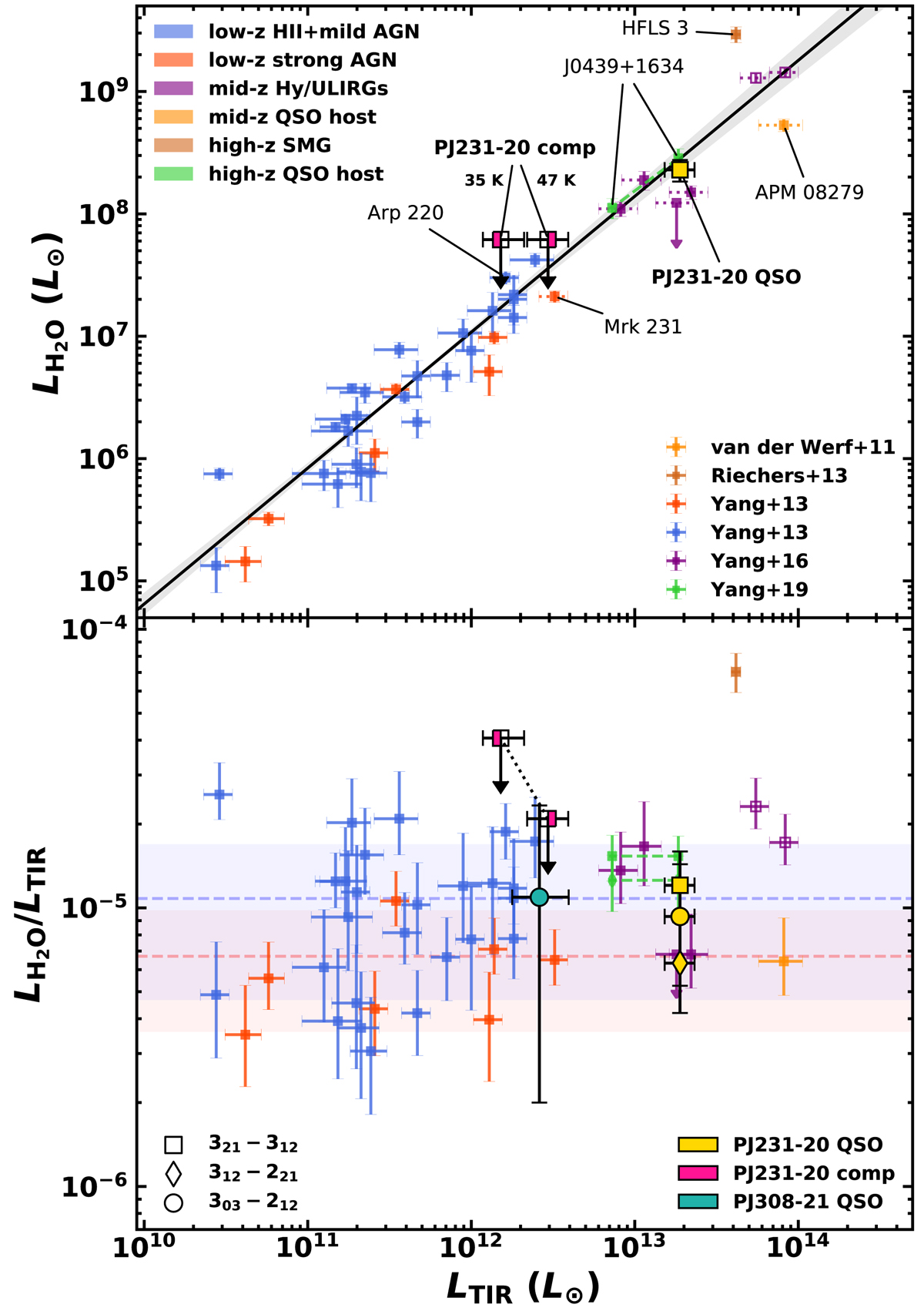Fig. 13.

Upper panel: LH2O(321 − 312) − LTIR relation. The solid black line shows the best power-law fit from Yang et al. (2013) considering the low-z HII+mild and strong AGN sample (blue and red squares, respectively). The gray area is the 1σ confidence limit. The gold and magenta squares indicate the quasar host PJ231−20 and its companion, respectively. In the case of the companion, we report the cases assuming Tdust = 47 K (left half-filled magenta square) and 35 K (right half-filled magenta square). These points are connected by a dotted black line. Purple squares are the mid-z Hy/ULIRGs of Yang et al. (2016). We also report measurements of APM 08279+5255 (van der Werf et al. 2011), the z ∼ 6.3 SMG HFLS 3 (Riechers et al. 2013), and the z ∼ 6.5 J0439+1634 quasar (Yang et al. 2019a). Empty squares indicate measurements that were not corrected for gravitational lensing. Lower panel: LH2O/LTIR vs. total IR luminosity. Symbols are the same as in the upper panel. Together with LH2O/LTIR for the 321 − 312 transition, we also report those for 312 − 221 and 303 − 212 for QSO PJ231−20, the companion galaxy, QSO PJ308−21, and the quasar J0439+1634, as indicated in the legend.
Current usage metrics show cumulative count of Article Views (full-text article views including HTML views, PDF and ePub downloads, according to the available data) and Abstracts Views on Vision4Press platform.
Data correspond to usage on the plateform after 2015. The current usage metrics is available 48-96 hours after online publication and is updated daily on week days.
Initial download of the metrics may take a while.


